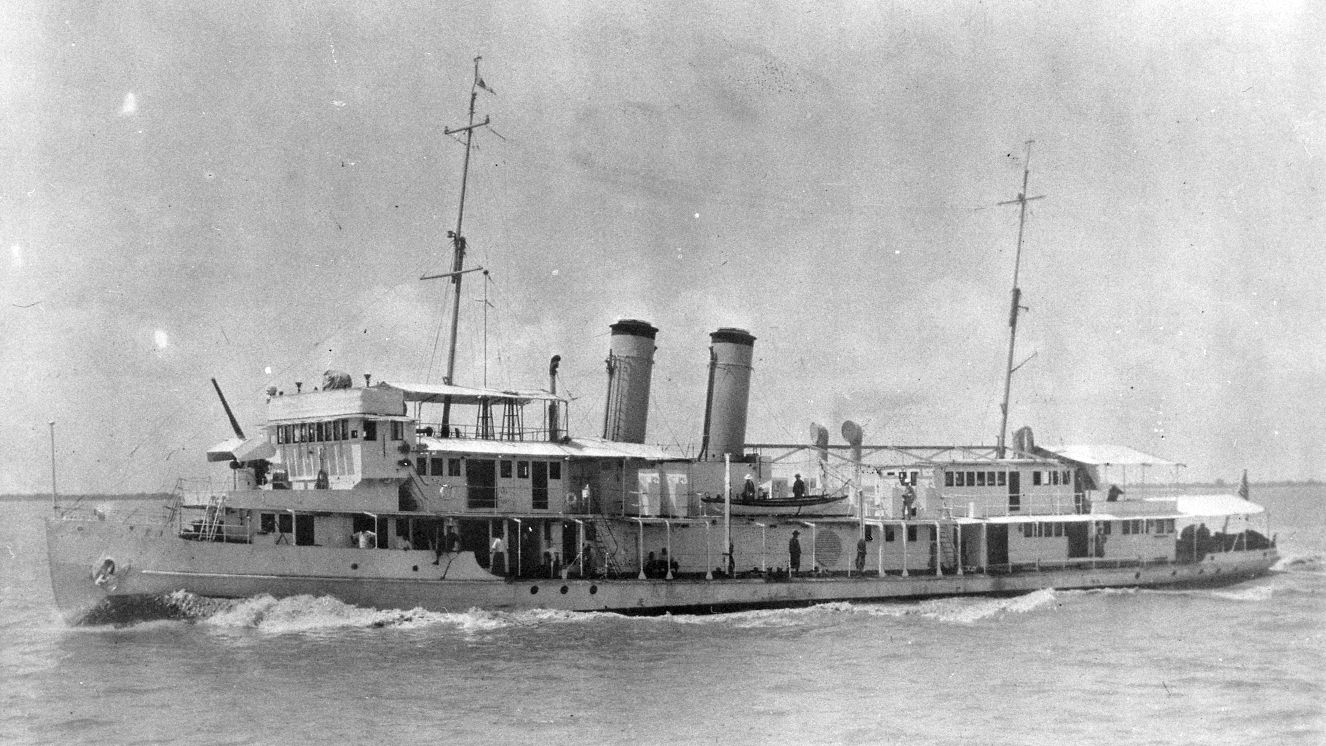GBU-57 BUNKER BUSTER: HOW THIS 30,000-POUND BOMB WORKS

Under the cover of darkness, and after weeks of speculation, the US joined its ally Israel in its attacks on Iran’s nuclear facilities with the intent of destroying, or significantly disrupting, Iran’s ability to enrich uranium and develop nuclear weapons. President Trump called the attack that destroyed Iran’s nuclear capability a, “spectacular military success,” while Chairman of the Joint Chiefs of Staff, General Dan Caine, added that it will be several weeks before the full impact of the attack can be assessed. The highlight of this attack was the operational employment, for the first time in history, of the GBU-57 Massive Ordnance Penetrator (MOP), the so-called “bunker buster.” Seven B-2 Spirit bombers, the only aircraft capable of carrying the large GBU-57, dropped 14 weapons on three hardened Iranian nuclear facilities. In this article, we’ll look at the history of bunker busters and how exactly they work.
History of Bunker Buster Bombs
Since the dawn of aerial combat, and the use of aircraft to drop bombs on enemy personnel and positions, the desire to more effectively strike enemy targets has driven the development of bigger and better bombs.
Naturally, the enemy figured out that hiding underground, or in hardened shelters beneath thick ceilings of reinforced concrete, offered reliable protection against enemy bombs. As a result, engineers were led to design and develop bombs that could penetrate these structures and destroy or damage the personnel and equipment hidden within them.
The development of air-dropped weapons that could penetrate hardened enemy targets – shipping, fortifications, underground enemy command centers, and other challenging targets – began during WWII.
These early weapons – and even more recent ones – used artillery shells as the bomb casing due to their robust construct and ability to penetrate hardened targets. Both Germany and the United Kingdom fielded weapons. The UK even developed a weapon known as the “Grand Slam” that it used to attack a Nazi U-Boat pens. During that attack, two Grand Slams went through 15 feet of reinforced concrete hardening — an impressive result even by today’s standards.
The Bunker Buster Debuted During the Korean War
The US employed its first bunker buster during the Korean War. The weapon – called the VB-13 Tarzon – was first used against an underground North Korean command center.
The Tarzon was essentially a British 12,000-pound "Tall Boy" bomb fitted with a forward shroud to provide lift, with flight control surfaces in the tail. The name came from a combination of Tall Boy and Razon.
The first Tarzon attack in Korea took place in December 1950, and by the end of January 19th,Bomb Group B-29s had cut spans out of four bridges.
Tarzons remained in short supply, however, and after a B-29 was believed lost attempting to jettison one, the Air Force canceled the Tarzon in August 1951. Eleven of the 30 Tarzons dropped in Korea hit their targets, destroying six bridges and damaging another.
The Daisy Cutter Was Used During the Vietnam War
During the Vietnam War, the US did not employ what could be defined as a bunker buster weapon.
The BLU-82 “Daisy Cutter” was carried only by the C-130 tactical transport aircraft and was designed as an air burst weapon, not a penetrating weapon, intended to clear large areas at the ground level.
The USAF followed up the BLU-82 with development of the GBU-43 Massive Ordnance Air Burst (MOAB) that was fielded in 2003, and was employed during Operation Enduring Freedom in Afghanistan.
The GBU-43 is colloquially called the “Mother of All Bombs” for good reason. At 21,715 pounds, it’s really big – the biggest non-nuclear bomb in the USAF arsenal at that time.
Like the BLU-82 before it, the GBU-43 was not designed as a penetrating weapon, even though its first use was against an Islamic State cave complex in Afghanistan. Also like the BLU-82, the GBU-43 can only be dropped by the C-130.

The Modern Bunker Buster
In the modern era, the BLU-109A/B was the first true bunker buster. It was designed to penetrate concrete shelters and other hardened structures before exploding.
Equipped with a steel casing about one-inch thick and a 550-pound warhead with a mechanical-electrical delayed-action tail-fuze, it had the ability to penetrate up to eight feet of reinforced concrete.
The BLU-109 entered service in 1985, and could be fitted to several different guidance units to enable precision electro-optical, laser or GPS targeting.
However, during Operation Desert Storm, NATO forces didn’t think the BLU-109A/B could penetrate deep enough, and sought a more capable solution. This led to the rapid development of the GBU-28, a weapon that used a much larger 5,000 pound bomb body than the BLU-109A/B.
The initial batch of GBU-28s was built from modified eight-inch artillery barrels from deactivated M110 howitzers, but later examples were purpose-built. The GBU-28 went from finalized design to first use in combat in only two weeks between February 13 and February 27,1991. During testing, it smashed through 22 feet of reinforced concrete.
GBU-28 Deployment History
A flight of two F-111F Nighthawks dropped the first GBU-28s in combat on the night of February 28, 1991, just hours before the Operation Desert Storm ceasefire, on al-Taji Airbase, located 15 miles northwest of Baghdad.
The second GBU-28 dropped was a direct hit. It penetrated the thick reinforced concrete before detonating, killing everyone inside. Since then, USAF F-15Es have dropped the GBU-28 in Yugoslavia, Afghanistan, and Iraq.
The US has also sold the GBU-28 to Foreign Military Sales customers, including 100 to Israel that have reportedly been used during their military operations in Gaza.
Limitations of GBU-28 Bunker Busters
In 2011, the USAF fielded the most powerful non-nuclear bomb in its inventory – the aforementioned GBU-57 Massive Ordnance Penetrator (MOP).
The GBU-57 is a 30,000 pound weapon and can penetrate up to 200 feet beneath the surface and through 60 feet of reinforced concrete to obliterate its target.
It can only be carried by the B-2 Spirit due to its size. The USAF also plans for its next generation bomber – the B-21 Raider – to carry the GBU-57. The GBU-57 includes an integrated GPS/INS guidance system and, therefore, doesn’t require the integration of a guidance package like the BLU-109A/B or GBU-28.

Mechanics of GBU-57 Bunker Busters
It’s a little bit more complicated than saying “The bigger the bomb, the bigger the bang,” but size does matter quite a bit in the bunker busting business.
Bunker busters are designed to penetrate reinforced structures or buried targets before detonating. They achieve this by combining mass, speed, a hardened casing, and a delayed fuse.
Here's how that works:
Penetration:
- Bunker busters are typically large and heavy, sometimes weighing thousands or even tens of thousands of pounds. This mass contributes to their kinetic energy, allowing them to gain momentum as they fall. That’s why they’re more effective when dropped from higher altitudes.
- They are designed with a hardened casing, often made from steel or even depleted uranium, to withstand the impact of penetrating hard materials like concrete or rock.
- The shape is often long and narrow to concentrate the force of the impact on a smaller area which aids penetration.
- Some bunker busters may even have rocket engines to increase their speed before impact. The GBU-57 does not. It gains its speed after being dropped from high altitudes.
Delayed Detonation:
- Unlike conventional bombs that explode on impact, bunker busters are equipped with a delayed fuse.
- This fuse is designed to trigger the explosion only after the bomb has penetrated the target to a specific depth, maximizing damage to underground facilities.
Targeting:
- Modern bunker busters often use precision guidance systems, like laser or GPS/INS, to accurately hit their intended targets.
- Intelligence analysis of the target location is very important for these missions. Analysts determine, as precisely as possible, the best location for the weapon to strike the intended target in order to achieve maximum penetration.
Effect:
- Once the desired depth is reached, the bomb's high-explosive payload detonates, collapsing the structure around the target or destroying it directly.
- In this case, the size of the warhead matters a lot. A larger warhead can achieve impacts at greater depths than smaller warheads. The bigger the bomb, the deeper the damage.
In short, a bunker buster uses its weight, and a hardened casing, to penetrate hardened defenses, a delayed fuse ensures the explosion occurs at the right time and place to inflict maximum damage, and a larger warhead can further increase the depth of that damage.
The following image, breaks it down into its key elements:

Suggested reads:
BY GEORGE RIEBLING
National Security Analyst at VeteranLife
Air Force Veteran
George Riebling is a retired USAF Colonel with 26 years of distinguished service as an Air Battle Manager, including operational assignments across five command and control weapon systems. He holds a Bachelor of Journalism, Radio & Television from the University of Missouri. Following his military c...
Credentials
Expertise
George Riebling is a retired USAF Colonel with 26 years of distinguished service as an Air Battle Manager, including operational assignments across five command and control weapon systems. He holds a Bachelor of Journalism, Radio & Television from the University of Missouri. Following his military c...



